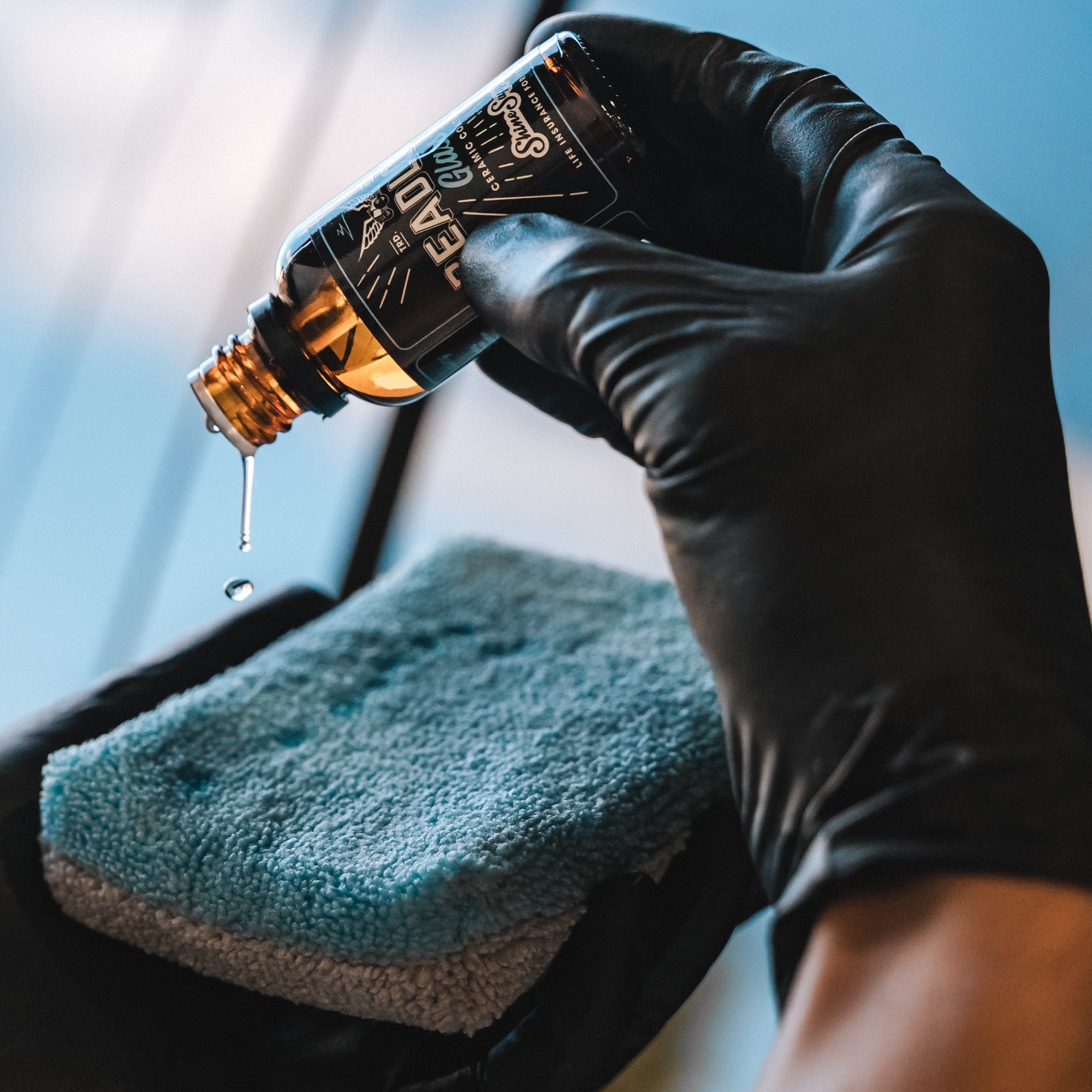Ceramic Coating: A Comprehensive Overview to Protecting Your Vehicle's Paint
Ceramic Coating: A Comprehensive Overview to Protecting Your Vehicle's Paint
Blog Article
Exploring the Science Behind Ceramic Covering and Its Effect On Car Describing
The application of ceramic covering in auto detailing represents a considerable innovation in vehicle treatment, rooted in its advanced chemical properties, mainly silica dioxide and titanium dioxide. As we check out the complexities of the application process and the lasting implications for automobile maintenance, it ends up being clear that the option of ceramic layer can fundamentally alter one's strategy to cars and truck care.
What Is Ceramic Covering?
Ceramic finishing is a contemporary remedy that has actually obtained appeal in the automobile outlining market for its capacity to offer durable protection for vehicle surface areas. This advanced safety layer is normally composed of silica dioxide (SiO2), which develops a solid bond with the lorry's paint, developing a durable guard versus ecological pollutants. Unlike conventional wax or sealants, ceramic coatings provide remarkable resistance to UV rays, chemical stains, and physical abrasions.
The application of ceramic coating involves a careful process, where the lorry's surface is extensively cleaned and decontaminated before the coating is applied (Ceramic Coating). When healed, the finishing boosts the lorry's gloss, deepness, and quality, providing a showroom-quality coating that lasts for years. One of the crucial advantages of ceramic covering is its hydrophobic residential properties, which push back water and dust, making maintenance simpler and decreasing the frequency of laundries
The Chemistry of Ceramic Coating
An essential element of ceramic coating exists in its chemical composition, largely identified by the visibility of silica dioxide (SiO2) This substance is essential to the development of a sturdy, safety layer that bonds chemically to the automobile's surface area.
In addition to SiO2, numerous ceramic layers include titanium dioxide (TiO2) and various other additives to improve their performance features. TiO2, for circumstances, contributes to enhanced solidity and chemical resistance. The interaction in between these substances creates an one-of-a-kind molecular structure that provides a high level of security versus ecological factors such as UV rays, acid rainfall, and oxidation.
Furthermore, the application procedure typically involves a precise preparation of the surface to make sure optimum attachment of the coating. This chemistry not just guarantees a durable finish but likewise improves the visual allure of the vehicle. Comprehending the intricate chemistry behind ceramic finishes is crucial for detailing experts who aim to supply remarkable defense and long life for their clients' cars.
Benefits of Ceramic Finish
While describing experts frequently highlight the advantages of ceramic finishes, their advantages prolong much beyond aesthetics. The primary advantage is premium protection versus ecological pollutants. Ceramic coverings create a hydrophobic surface that fends off grime, water, and dust, considerably reducing the regularity of laundries and the effort required to keep a car's appearance. This safety layer additionally guards the paint from unsafe ultraviolet rays, stopping oxidation and fading in time.
Additionally, ceramic layers improve the durability of the vehicle's coating. Unlike conventional waxes or sealers, which may last a few months, ceramic coatings can sustain for several years, supplying a long-lasting solution for car treatment. This toughness equates to cost financial savings, as proprietors are less most likely to require regular reapplication.
Additionally, ceramic layers are immune to chemical spots and etching, which can take place from acidic compounds like bird droppings or tree sap. This resistance not only maintains the automobile's link aesthetic appeals but additionally reduces possible damages - Ceramic Coating. Overall, the financial investment in ceramic finishing offers auto owners a substantial return in terms of defense, simplicity of upkeep, and resilient aesthetic charm, making it a significantly prominent selection in the realm of automotive outlining
Application Refine Discussed

Once the surface area is adequately prepared, the ceramic layer can be used. It is normally performed in a controlled environment, such as a garage or describing bay, to avoid contamination from dirt and debris. Using an applicator pad, the professional uses the finishing in small areas, operating in a crosshatch pattern to make sure also coverage. It is necessary to comply with the producer's instructions concerning application thickness and treating times.
As soon as healed, the ceramic layer creates a solid bond with the paint, supplying improved defense and a shiny finish. Appropriate application is crucial to maximize the longevity and effectiveness of the ceramic finish.

Long-term Impact on Lorry Care
The long-lasting effect of ceramic covering on vehicle care is substantial, as it essentially alters how proprietors maintain their automobiles. By creating a sturdy, hydrophobic layer on the vehicle's surface area, ceramic layers minimize the adherence of dust, grime, and pollutants. This home reduces the regularity of washing required, eventually conserving water and cleaning products.
Furthermore, the UV defense used by ceramic coatings helps to stop oxidation and fading of the lorry's paint, maintaining its visual allure and resale worth in time - Ceramic Coating. This protective obstacle additionally decreases the likelihood of scratches and swirl marks, which prevail issues in standard paint read more coatings
Moreover, ceramic layers promote simpler upkeep, allowing proprietors to cleanse their lorries with minimal initiative. The smooth surface makes it tough for contaminants to bond, allowing less complex elimination during routine cleansing.
Over time, the investment in ceramic finishing might lead to cost savings in automobile care products and services. Generally, the sustaining advantages of ceramic coverings not only improve the look of lorries but also add to check my reference a much more lasting and reliable approach to vehicle maintenance.
Conclusion
In final thought, the application of ceramic finish stands for a substantial advancement in vehicle outlining, driven by its distinct chemical structure of silica dioxide and titanium dioxide. This innovation not just boosts the visual allure of automobiles yet likewise supplies robust security against environmental hazards and wear. The long-term advantages, including lowered upkeep regularity and enhanced longevity, emphasize the worth of ceramic finishings as a necessary financial investment for preserving car appearance and honesty with time.

Report this page